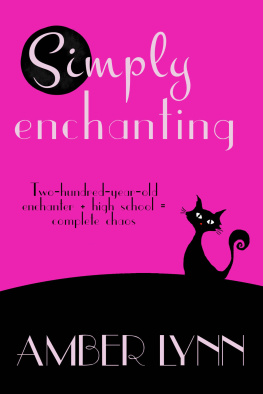Lynn M. LoPucki - Courting Failure
Here you can read online Lynn M. LoPucki - Courting Failure full text of the book (entire story) in english for free. Download pdf and epub, get meaning, cover and reviews about this ebook. year: 2018, publisher: The University of Michigan Press, genre: Politics. Description of the work, (preface) as well as reviews are available. Best literature library LitArk.com created for fans of good reading and offers a wide selection of genres:
Romance novel
Science fiction
Adventure
Detective
Science
History
Home and family
Prose
Art
Politics
Computer
Non-fiction
Religion
Business
Children
Humor
Choose a favorite category and find really read worthwhile books. Enjoy immersion in the world of imagination, feel the emotions of the characters or learn something new for yourself, make an fascinating discovery.
- Book:Courting Failure
- Author:
- Publisher:The University of Michigan Press
- Genre:
- Year:2018
- Rating:4 / 5
- Favourites:Add to favourites
- Your mark:
- 80
- 1
- 2
- 3
- 4
- 5
Courting Failure: summary, description and annotation
We offer to read an annotation, description, summary or preface (depends on what the author of the book "Courting Failure" wrote himself). If you haven't found the necessary information about the book — write in the comments, we will try to find it.
Courting Failure — read online for free the complete book (whole text) full work
Below is the text of the book, divided by pages. System saving the place of the last page read, allows you to conveniently read the book "Courting Failure" online for free, without having to search again every time where you left off. Put a bookmark, and you can go to the page where you finished reading at any time.
Font size:
Interval:
Bookmark:
 Page i
Page i Courting
Failure
Failure
How Competition
for Big Cases
Is Corrupting the
Bankruptcy Courts
Lynn M. LoPucki
T HE U NIVERSITY OF M ICHIGAN P RESS
Ann Arbor
Copyright by the University of Michigan 2005
All rights reserved
Published in the United States of America by
The University of Michigan Press
Manufactured in the United States of America Printed on acid-free paper
Printed on acid-free paper
2008 2007 2006 2005 4 3 2 1
No part of this publication may be reproduced,
stored in a retrieval system,
or transmitted in any form or by any means,
electronic, mechanical, or otherwise,
without the written permission of the publisher.
A CIP catalog record for this book is available from the British Library.
Library of Congress Cataloging-in-Publication Data
LoPucki, Lynn M.
Courting failure : how competition for big cases is
corrupting the bankruptcy courts / Lynn M. LoPucki.
p. cm.
Includes index.
ISBN 0-472-11486-7 (cloth : alk. paper)
1. BankruptcyUnited States. 2. Forum shopping
United States. 3. Judicial corruptionUnited States.
I. Title.
KFI 526.l67 2005
346.73078dc22
004021715
ISBN13 978-0-472-11486-3 (cloth)
ISBN13 978-0-472-03170-2 (paper)
ISBN13 978-0-472-02431-5 (electronic)
To Frances, who made it happen
Page vii Page viiMy work on this book was supported by grants from the National Conference of Bankruptcy Judges Endowment for Education and the American Bankruptcy Institute Endowment for Education. The content of the book is based in part on work supported by the National Science Foundation under grant SES-8618353 and also in part on findings from a series of research projects conducted and reported with coresearchers and coauthors. These colleagues are Professor William C. Whitford of the University of Wisconsin Law School; Professor Theodore Eisenberg of the Cornell Law School; Joseph W. Doherty, associate director of the Empirical Research Group at the UCLA Law School; and Sara Kalin, a graduate of the UCLA Law School who currently practices with the Securities and Exchange Commission.
I thank Mike Campion, Christian Dodd, Scott Halvorsen, L. Nicolle Hollingsworth, Michael Kovaleski, Drew LoPucki, and Richard Scheelings for assistance with research and Frances H. Foster, Jim Reische, Gary D. Rowe, Lynn A. Stout, Elizabeth Warren, and Jay L. Westbrook for comments on the manuscript or portions of it, and Susan Rabiner for guidance. Jim Reische, my editor at the University of Michigan Press, did a marvelous job of rescuing this project from obscurity and guiding me through the publication process.
I am also deeply indebted to the dozens of bankruptcy lawyers and judges who furnished leads for my investigations. Their only reward will be the contribution they made to the integrity of the bankruptcy system; nearly all of them requested anonymity. Without their help, I would not have found the facts and documents that make the case presented in this book.
Page viii Page ixMost of the statistics that appear in this book are based on data contained in the authors Bankruptcy Research Database (BRD). The BRD includes data on all bankruptcy cases filed by or against large public companies in the U.S. bankruptcy courts since October 1, 1979presently a total of 683 cases. Cases are considered large if the debtors assets exceeded $220 million, measured in current dollars as of the time of filing ($100 million in 1980 dollars). They are public if the company was required to file annual reports with the Securities and Exchange Commission in any of the three years before bankruptcy. (About 8090 percent of the companies large enough for their cases to be included in the BRD are public companies.) Unless otherwise specified, the numbers of big or large cases reported in this book are the numbers of such cases in the BRD.
The cases included in the BRD are not a sample. They are all cases filed by or against large public companies. For that reason, it was neither necessary nor possible to calculate the likelihood that the BRD cases are representative of some larger group. They are the larger group.
An abbreviated version of the BRD is available without charge at http://lopucki.law.ucla.edu. Using that version, readers can examine the data behind most of the statistics reported in this book, calculate statistics not reported in this book, and see how the pattern of big bankruptcy reorganizations has changed since the publication of this book.
Page xiiA Judge Shall Avoid Impropriety and the Appearance of
Impropriety in All of the Judges Activities.
Canon 2, American Bar Association
Model Code of Judicial Conduct (1990)
Any... judge... of the United States shall
disqualify himself in any proceeding in which his
impartiality might reasonably be questioned.
Title 28, United States Code, 455(a)
In 1884, James B. Dill was a young lawyer with a small New York City practice and a big idea. He had already pitched the idea to the New York political bosses, and they had turned him down. Now he had a second chancewith Leon Abbett, the Democratic governor of New Jersey. The muckraking journalist Lincoln Steffens later described the meeting.
[Dill] was... taken aback to be directed from the capitol at Trenton to the governors law office in New York, but he went there; and there, to the governor in his shirt sleeves, he showed how Jersey, by granting license to business to do what other states were trying to forbid, might become the Mecca of corporations and make an enormous revenue.
In essence, Dill proposed that the state of New Jersey enter the already competitive business of selling corporate charters.
A corporate charter is the document that brings a corporation into existence. Once the corporation is in existence, its affairs are governed by the law of the charter-issuing state. If New Jersey issued a corporations charter, the corporation was a New Jersey corporation. That corporation could operate anywhere in the United States, subject only to New Jersey law. Under todays law and practice, the chartering states exclusive control extends only to the internal affairs of its corporations. But in the late nineteenth century, that control extended more broadly, covering much Page 2 of what is known today as the law of antitrust, fair trade, price fixing, and securities. The sum total of it was that in 1884 New Jersey had the power to authorize New Jersey corporations to do things in other states that violated the laws of those other statesand there was nothing the other states could do about it.
That part of the idea was not entirely new. Other states had already hit on the idea of liberalizing their corporation laws in order to sell corporate charters. Dill had heard how the secretary of state of the state of West Virginia was in [New York City], at the Fifth Avenue Hotel, where, with the great seal of his state by his side, he was displaying the liberality of his laws and selling chartersfor fees.
Dills idea went further. Dill realized it was not enough to create, offer, and explain the New Jersey charter; New Jersey would have to package its charters and market them so the great corporations buying them would never miss a stride. The New Jersey charter was to cease to be a regulation and instead become a convenience. To accomplish that, Dill, along with the governor, the New Jersey secretary of state, the clerk of New Jerseys Court of Chancery, and an assortment of the most powerful business leaders in New Jersey founded the Corporation Trust Company of New Jersey. The Corporation Trust Company was a privately owned corporation that would provide full services to those who wished to incorporate in New Jersey, supplying everything from the official forms to the required New Jerseyresident member of the corporations board of directors. As it did so, the new company would make Dill, and the political and business leaders of New Jersey who invested in it, rich.
Font size:
Interval:
Bookmark:
Similar books «Courting Failure»
Look at similar books to Courting Failure. We have selected literature similar in name and meaning in the hope of providing readers with more options to find new, interesting, not yet read works.
Discussion, reviews of the book Courting Failure and just readers' own opinions. Leave your comments, write what you think about the work, its meaning or the main characters. Specify what exactly you liked and what you didn't like, and why you think so.










